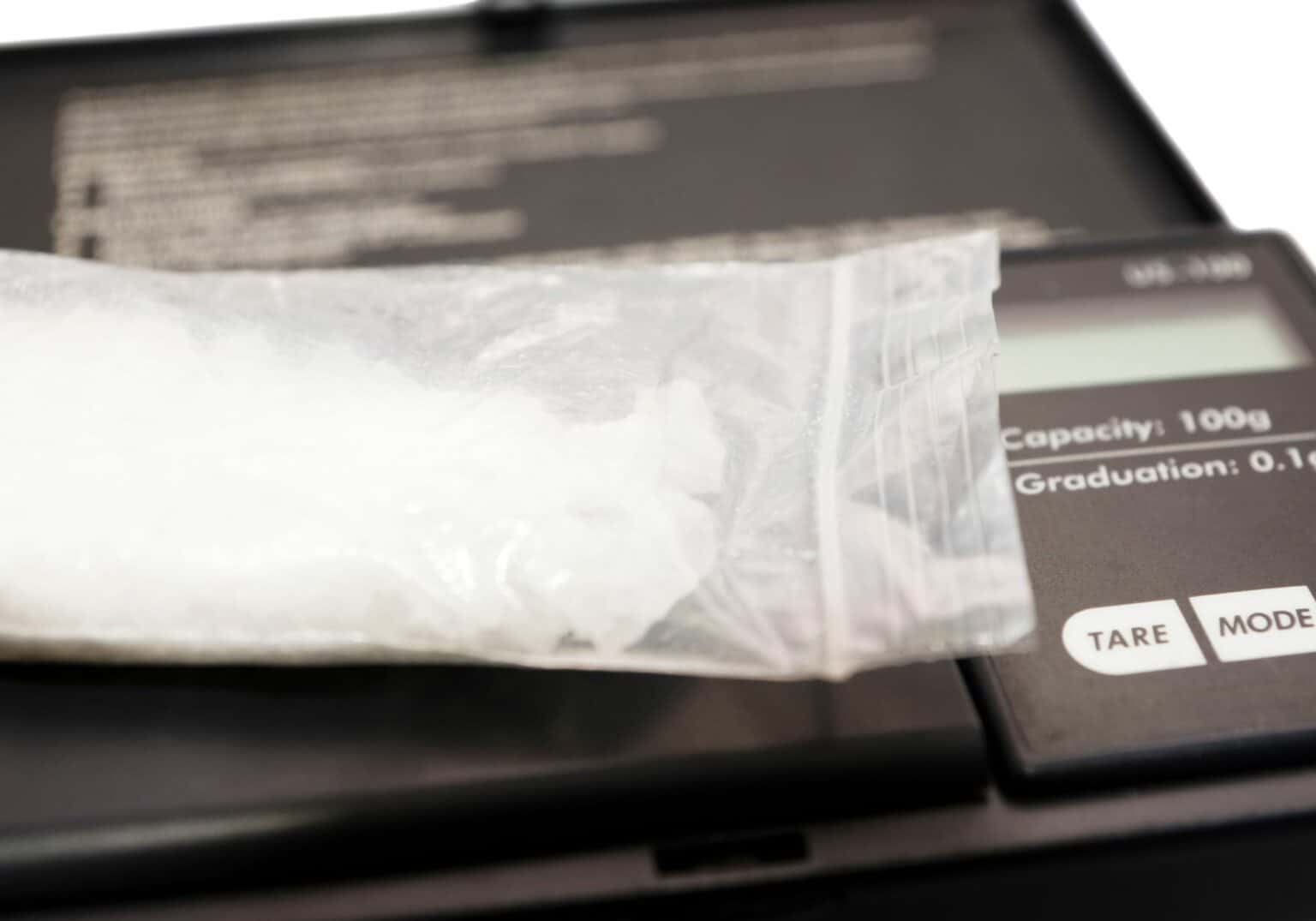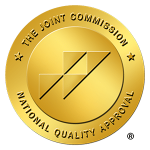Crack and meth are both potent and illegal substances, but it’s important to understand how they differ and what they have in common. Gaining insight into these drugs can be crucial in recognizing if someone you know might be using them, enabling you to assist them in finding the necessary help before the situation worsens.
Both substances are highly addictive and can have devastating effects on a person’s health and well-being. However, their composition, effects, and the risks associated with their use vary significantly. Educating yourself about these differences and similarities is a proactive step in addressing potential drug abuse issues and facilitating timely intervention and care.
What’s The Difference Between Crack and Meth?
Understanding the distinctions between crack and meth, as well as their similarities, is crucial for a comprehensive grasp of these drugs’ impacts. While both share significant risks, they differ in origin, composition, and effects.
- Origin and Composition: Methamphetamine, commonly known as meth, is a synthetic drug manufactured through chemical processes. In contrast, crack cocaine is derived from the coca plant, undergoing a process that converts cocaine into a smokable form.
- The Nature of the High: Meth typically induces a rapid onset of euphoria followed by a prolonged high that can last several hours. On the other hand, crack cocaine is known for providing an intense but very brief high, often lasting just a few minutes.
- Method of Consumption: Meth can be consumed in various ways, including smoking, snorting, or injection. Crack cocaine, however, is primarily smoked, which contributes to its rapid onset of effects.
What’s The Similarities Between Crack and Meth?
- Illicit Stimulants: Both crack and meth fall under the category of stimulants, meaning they increase activity in the central nervous system, leading to heightened alertness, energy, and euphoria.
- Health Risks: The health risks associated with both drugs are severe and include the potential for addiction, behavioral changes, neurological damage, and the risk of overdose. Long-term use of either substance can lead to serious health complications, including heart problems, mental health issues, and cognitive impairments.
- Socioeconomic Impact: The use of both crack and meth has significant social and economic implications, often contributing to wider issues such as crime, family breakdown, and economic strain on healthcare systems.
Understanding both the differences and similarities between crack and meth is vital in recognizing their individual and combined effects on users and society. This knowledge is key for those in healthcare, law enforcement, and social support roles, as well as for individuals and communities seeking to understand and address the challenges posed by these substances.
What is Meth?
Methamphetamine, commonly referred to as meth, is a synthetic stimulant drug known for its powerful effects. This substance can be found in various forms, including the traditional meth in powder or pill form, and the more crystallized version known as crystal meth, which resembles glass shards or shiny rocks. A significant portion of the meth available in the United States is brought in by Mexican drug cartels.
Domestically produced meth in the U.S. is frequently made using pseudoephedrine, a decongestant commonly found in over-the-counter medications like Sudafed. The process of manufacturing meth involves several chemical reactions, often making the drug highly potent and dangerous due to the unpredictability of its composition and the hazardous substances used in its creation.
Understanding the origins, forms, and production methods of meth is crucial in comprehending its impact on individuals and communities. This knowledge plays a vital role in identifying and addressing methamphetamine abuse, contributing to more informed discussions about prevention, treatment, and enforcement strategies.
What is Crack?
Crack cocaine, often simply known as crack, is a potent form of cocaine, a natural stimulant extracted from the coca plant native to South American countries such as Bolivia, Peru, and Colombia. Crack represents a more concentrated and powerful version of cocaine. It’s typically trafficked into the United States, predominantly via routes that pass through Mexico, similar to the trafficking patterns of methamphetamine.
Crack is the crystallized variant of cocaine, known for its greater potency compared to other forms of cocaine. Its appearance can vary, often displaying colors that range from pale pink and white to yellow, depending on its purity and the manufacturing process.
The use of crack involves heating the substance, usually on a spoon or in a pipe, and then smoking it. This method of consumption is known for producing a distinctive crackling sound when the drug is heated, which is the origin of its name, “crack.” The intense high from crack is short-lived but extremely potent, leading to its high potential for addiction.
Understanding the nature, production, and impact of crack cocaine is essential in comprehending its role in substance abuse and its effects on individuals and communities. This knowledge aids in fostering informed discussions around prevention, treatment, and legal implications, contributing to the broader conversation on tackling drug abuse and trafficking.
Comparing the Experiences of Crack and Meth Use
Both crack and meth are classified as stimulants, with each causing a range of intense effects on the user. People using either of these substances typically encounter experiences such as:
- A surge of euphoria
- Rapid heart rate and increased blood pressure
- Boosted energy levels and self-confidence
- Enhanced sensitivity to sensory stimuli like light, sound, and touch
- Reduced appetite and a decreased need for sleep
One of the key differences between crack and meth lies in the duration of their effects. Crack, a form of cocaine that is smoked, provides a very intense but short-lived high, generally fading within 10 to 15 minutes. This brief duration often leads to a cycle of repeated use to maintain the high, which can rapidly escalate into addiction.
On the other hand, methamphetamine offers a much longer-lasting experience. When a person takes meth, whether by smoking, snorting, or injecting it, the high can persist for an extended period, typically ranging from six to twelve hours. This prolonged effect can make meth use particularly alluring to users seeking longer durations of euphoria and stimulation.
Understanding these differences in experiences between crack and meth is crucial for comprehending their individual impacts on users. Both drugs have a high potential for addiction and serious health consequences, underscoring the importance of awareness and education in addressing substance abuse issues.

Crack Addiction vs Meth Addiction
When comparing crack and meth in terms of addiction potential, there’s little difference between the two: both drugs carry a high risk of addiction. Users of either crack or meth can quickly find themselves in the grip of dependency.
The use of these stimulants is often characterized by an intense high followed by a severe physical and psychological crash. This crash, marked by feelings of exhaustion, depression, and intense cravings, drives individuals to use these substances repeatedly in an attempt to avoid the discomfort. For instance, someone engaging in a meth binge might stay awake for days, continually using the drug to maintain their high and delay the inevitable crash.
The frequency of use plays a critical role in the development of addiction. As individuals consume crack or meth more often, their bodies and brains begin to rely on these drugs, leading to dependence. This dependency creates a cycle where the drug becomes necessary for them to feel normal or functional.
Once addiction sets in, breaking free from the hold of crack or meth becomes an increasingly challenging task. Overcoming such an addiction typically requires professional intervention and care. The journey to recovery often involves comprehensive treatment approaches, including detoxification, therapy, and long-term support, underscoring the necessity of seeking help for those struggling with crack or meth addiction.
Dangers of Crack vs Meth Use
Both crack and meth are notorious for their dangerous side effects and potential for addiction. While they share similarities in their risks, each drug also poses unique dangers to users. Understanding these risks is vital for recognizing the severity of abuse and the importance of seeking help.
Dangers Associated with Crack Use:
- Cognitive Impairment: Crack can significantly diminish cognitive abilities, affecting decision-making and memory.
- Cardiovascular Problems: Users face increased risks of heart attacks, arrhythmias, and other cardiovascular complications.
- Liver and Kidney Damage: Prolonged crack use can lead to serious damage to these vital organs.
- Malnutrition: Crack often suppresses appetite, leading to severe weight loss and malnutrition.
- Hallucinations and Delusions: Users may experience intense, sometimes disturbing hallucinations and delusions.
- Paranoia: Chronic use can lead to extreme paranoia.
- Delirium and Psychosis: Long-term use can result in episodes of delirium and persistent psychosis.
Dangers Associated with Meth Use:
- Severe Dental Decay (“Meth Mouth”): Meth often causes extensive dental problems, including tooth decay and loss.
- Skin Damage: Users may experience skin issues due to compulsive scratching and picking.
- Aggressive and Violent Behaviors: Meth can significantly alter a person’s behavior, often leading to aggression and violence.
- Auditory and Visual Hallucinations: Users might experience hallucinations, affecting their perception of reality.
- Changes in Brain Structure and Functioning: Meth can lead to long-term changes in how the brain works, impacting cognitive functions.
- Memory Impairments: Prolonged use can lead to memory loss and difficulties.
- Psychosis: Chronic use can result in psychosis, manifesting as paranoia, delusions, and hallucinations.
The risks associated with both crack and meth are profound and wide-ranging, affecting nearly every aspect of a user’s life. From physical health to mental well-being, the dangers are real and sometimes irreversible. It’s crucial to understand that using either of these drugs exposes individuals to potentially life-threatening conditions and long-term health consequences, including death. This understanding underscores the importance of prevention, early intervention, and effective treatment for those struggling with addiction to these substances.
Is Meth Worse Than Crack?
The question of whether meth is worse than crack, or vice versa, doesn’t have a straightforward answer. Both substances are illegal drugs with high potential for abuse and serious health risks. The dangers associated with both meth and crack are significant and, in many ways, comparable.
Both drugs can lead to profound behavioral changes, carrying a substantial risk of overdose. The psychological and physical toll of these substances can be severe and life-altering. Individuals struggling with methamphetamine use face similar risks of addiction and life-threatening consequences as those grappling with crack cocaine use.
The impact of meth and crack extends beyond the risk of addiction and includes a range of health complications. These drugs can cause serious damage to the heart, brain, and other vital organs, lead to mental health disorders, and increase the likelihood of engaging in risky behaviors.
Furthermore, the social and economic costs of meth and crack use are considerable, affecting not only the users but also their families and communities. The destructive nature of these drugs underscores the importance of comprehensive treatment programs and effective public health strategies to combat their use.
In summary, it’s not about which drug is “worse” – both meth and crack pose severe risks to individuals and society. The focus should be on understanding these risks, providing effective support and treatment to those affected, and working towards prevention and education to reduce the prevalence of their use.
What If I am Addicted to Both Crack and Meth?
Understanding the Health Impacts Battling addiction to both crack and meth, two potent stimulants, presents a unique set of health challenges. While these drugs share similarities in the stimulant effects they produce, being addicted to either or both can lead to distinct health complications.
For individuals addicted to crack, several health issues are commonly observed, including:
- Respiratory problems, which can range in severity and impact overall lung health.
- Ulcers in the respiratory tract, a concerning complication that affects breathing and lung function.
- Chest pains, which can be both alarming and indicative of more serious underlying conditions.
On the other hand, meth addiction is often associated with its own set of health concerns:
- Dental problems, famously known as “meth mouth,” characterized by severe tooth decay and gum disease.
- Increased aggressive behavior, which can affect personal relationships and social interactions.
- Physical manifestations like twitching or seizures, which are not only distressing but also signal potential neurological damage.
Understanding these health implications is vital for anyone facing addiction to these substances. Each drug carries its own risks, and when combined, these risks can compound, underscoring the need for informed and comprehensive treatment approaches.
How is Crack Addiction vs. Meth Addiction Treated?
Addressing addictions to substances like crack and meth is crucial, and thankfully, there are effective treatments available for both.
The selection of the most appropriate treatment approach for an individual struggling with crack or meth addiction depends on several personal aspects. These include the duration of drug use, the intensity of their usage, the impact of the addiction on their lives, and any concurrent mental health issues they might be facing.
A common first step for many who are dependent on crack or meth is undergoing detoxification. This process is a brief but essential phase aimed at safely navigating through withdrawal symptoms with as little discomfort as possible.
Post-detox, the journey to recovery from meth or crack addiction typically involves either inpatient or outpatient treatment. These programs encompass a range of therapies and support services designed to assist in various ways, such as:
- Transforming harmful thought and behavior patterns into healthier ones.
- Cultivating improved skills for managing stress and coping with challenges.
- Identifying potential relapse triggers and learning how to handle them effectively.
- Developing strategies to either avoid these triggers or deal with them without reverting to substance use.
- Initiating the process of mending relationships that were strained or broken due to addictive behaviors.
- Participating in supportive communities with others who have faced similar challenges and are on the path to recovery.
- Accessing community resources that provide ongoing support for sustained recovery.
This comprehensive approach to treatment acknowledges the complexity of addiction and prioritizes a path to long-term health and well-being.
Contact Our Meth and Crack Addiction Treatment Center in Atlanta, GA
Struggling with an addiction to crack or meth can be overwhelming, but at Hope Harbor Wellness, we’re here to offer support. Located in Atlanta, our center specializes in providing compassionate outpatient care for adults grappling with these addictions.
Our team, comprising empathetic and skilled professionals, takes the time to understand the comprehensive mental and behavioral health needs of each individual. This thorough approach allows us to craft personalized treatment plans aimed at helping our patients cease substance abuse and lay the groundwork for a sustained and successful recovery.
We recognize that each person’s journey with meth or crack addiction is distinct, and our commitment lies in ensuring that everyone receives care tailored to their specific circumstances.
For more information or to arrange a no-cost assessment, we invite you to explore our Admissions page or contact us at 678-929-6304. Our team is ready to guide you on the path to recovery.












